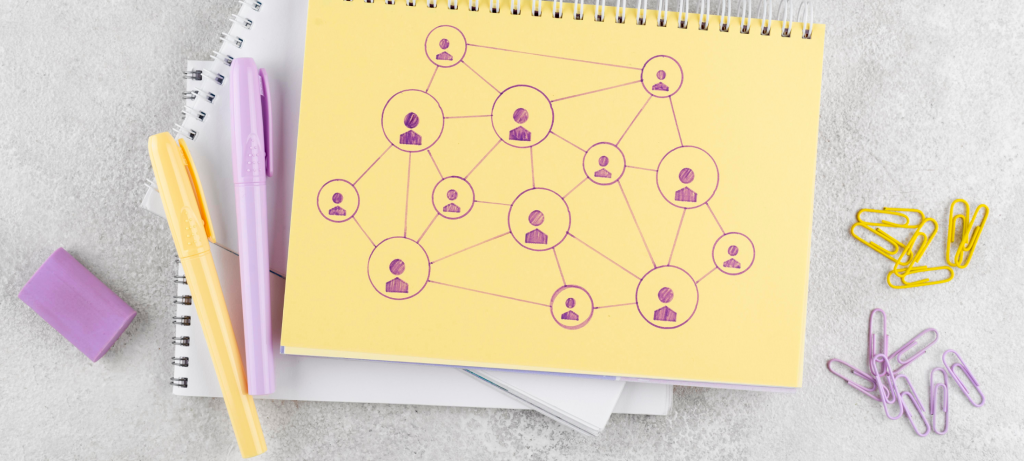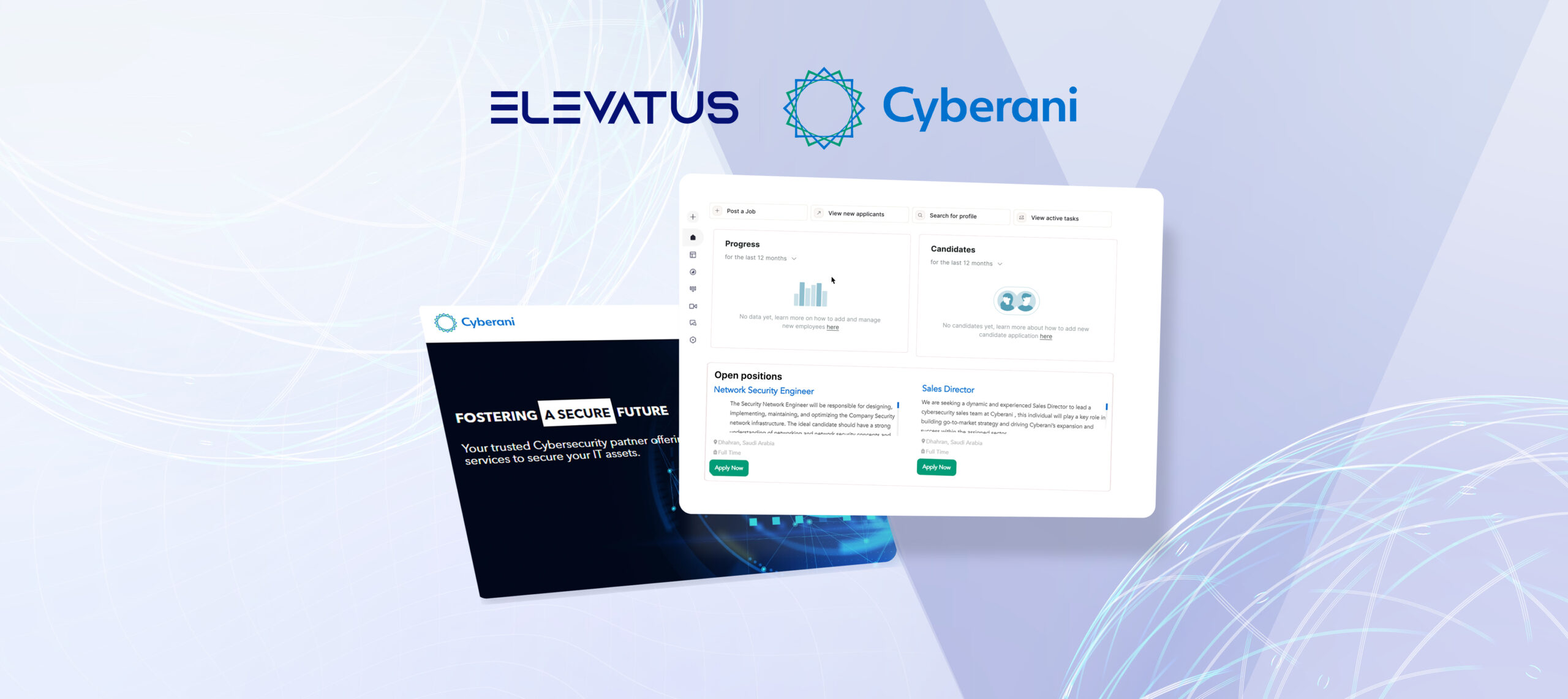
Employee Retention Plan
November 24, 2023
Reem Al-Tamimi
Content Writer
As the “Great Resignation” unfolds, the world’s workforce is changing rapidly. Motivated by the need for better pay, opportunities, and satisfaction, employees are confidently leaving, putting employers in a tough spot. This huge change, fueled by catchy online sayings like “act your wage,” highlights the critical need for a creative employee retention plan. It’s not just about having staff; it’s about truly appreciating the individuals who are part of the team.
This period of change requires more than quick fixes; it calls for a solid plan. If your business has felt the impact of this large-scale departure or is worried about what might come, it’s time to seriously review your approach. Are you providing strong reasons for your best people to stay? In a world where employees hold the cards, companies must reassess and improve their work environment.
We’re ready to help you through this. Our practical guide doesn’t just offer tips; it shows the way to a comprehensive employee retention plan. With 13 smart strategies, we assist you in building a workplace that’s not just a job but a place where employees want to stay, grow, and contribute to your success.
One single platform to recruit and onboard new hires
Confidently automate task delegation for new hires, eliminating manual checklists, data duplication, and overlooked details. Set role-specific onboarding tasks, assign owners, activate automatic reminders, and track progress effortlessly in one place.
Request a demoFrom Reactive to Proactive: The Art of Employee Retention
An employee retention plan isn’t just a safety net – it’s your team’s lifeline. It’s the bold move from scrambling in crisis to steering the ship with confidence. Forget the frantic damage control when star players hand in their notices. This is about laying the groundwork now so they don’t want to leave in the first place. We’re talking proactive, not reactive – a complete game-changer.
But let’s be real. It’s not about throwing random perks at the wall and seeing what sticks. A solid employee retention plan means getting into the nitty-gritty of what your team values and then showing up for them every single day. It’s about seeing the big picture and fitting your strategies into that masterpiece, tailored to what your people need at every turn. And yes, it might mean stretching those HR resources a bit, but the payoff is a team that’s in it for the long haul.
So, where do you start? Think strategic, act strategic. Break it down into clear, doable steps. Understand what lights the fire for your team at every stage of their journey. And for the small businesses thinking they can’t make it happen – this is your playbook. With or without high-tech tools, you can craft a plan that’s not just a quick fix but a long-term strategy, keeping your crew on board and thriving. Because at the end of the day, an employee retention action plan is more than a strategy; it’s the backbone of a team that’s going places together.
Employee Retention Plan Template
Creating an action plan for employee retention isn’t just a task; it’s a strategic commitment. It’s about understanding your organization’s pulse and stitching a fabric that not only attracts but, more importantly, retains. Here’s how you craft a plan that sings “stay” in every weave.


Organizational Analysis
Organizational analysis is the bedrock of your employee retention plan. It involves a thorough examination of your company’s current state, including its structure, culture, employee satisfaction, and turnover rates. Identifying areas of strength and those requiring improvement is crucial. This step isn’t just about spotting the flaws; it’s about recognizing the potential, understanding the unique dynamics at play, and setting a solid foundation for the strategies to follow.
In this phase, pay close attention to the details. Look into various departments and roles, assess leadership styles and the overall work environment. Remember, every piece of information can give you profound insights into creating a robust employee retention plan that isn’t just a quick fix but a long-term solution.
Objectives of the Employee Retention Plan
Setting objectives is a pivotal step in your employee retention plan. These objectives should not only encapsulate your organization’s vision for its workforce but also be SMART – Specific, Measurable, Achievable, Relevant, and Time-bound. These goals will guide your strategies, keeping them aligned with broader organizational aims. They serve as the compass for your retention initiatives, ensuring every step taken is one toward definitive, meaningful progress.
Objectives vary depending on organizational needs. However, common ones include reducing turnover rates, increasing employee satisfaction, or enhancing talent development. Be precise in what you want to achieve, ensuring these targets resonate with both management’s aspirations and the expectations of your workforce. After all, the most compelling objectives are those that reflect shared ambitions.
Onboard and nurture new hires before day one
Easily onboard a group of new hires – all at once. Seamlessly customize onboarding for various new hires from different job types, departments, and locations with just a few clicks.
Request a demoStakeholder Involvement
Involving stakeholders isn’t just a step in the process; it’s the lifeblood of your employee retention plan’s success. Stakeholders, including executives, managers, and employees, provide the insights and support needed to craft a plan that’s both comprehensive and feasible. Their buy-in is essential not only for gathering qualitative data but also for ensuring the plan’s objectives align with broader organizational goals.
Encourage open dialogue, invite feedback, and create channels for continuous communication with stakeholders. Active participation from them will instill a sense of ownership and commitment to the plan’s success. This isn’t just about retention; it’s about building a community within your organization that thrives on collaboration and shared goals.
Identifying Target Employee Groups
Not all employees have the same needs or face the same challenges. That’s why identifying target employee groups is essential. These could be based on tenure, role, performance, or other criteria relevant to your organization. Understanding the unique needs and drivers of different groups allows for a more tailored approach, addressing specific concerns and enhancing job satisfaction in a way that resonates more deeply.
This isn’t about preferential treatment; it’s about equity over equality. It’s recognizing that the one-size-fits-all approach is no longer viable and that personalized, thoughtful strategies are key to retaining diverse talents. By focusing on target groups, you ensure that no employee slips through the cracks and that every action taken within your retention plan hits its mark.


Comprehensive Review of Current Policies
Before introducing new strategies, take a step back and evaluate your current policies. What’s working? What’s not? This comprehensive review should consider everything from recruitment strategies to performance management, compensation, and work-life balance policies. Understanding the efficacy of current policies isn’t just good practice; it’s essential to inform the direction of your retention initiatives.
This review shouldn’t be a cursory glance; it demands a deep dive. Involve feedback from employees, consider data on turnover rates, and reflect on the organizational culture these policies have cultivated. This stage is about being honest with yourself, acknowledging shortcomings, and celebrating what’s working. It’s the insights gained here that will fuel the transformative strategies your employee retention plan will introduce.
Development and Career Progression Strategies
Development and career progression are at the heart of employee retention. Employees need to see a future within your organization, a path that not only promises growth but also fulfills their aspirations. Your strategies should include robust training programs, opportunities for advancement, and clear, achievable pathways to success. When employees see the future, they invest in their present.
Remember, these strategies should be flexible, accommodating the ambitions of a diverse workforce. From mentorship programs to continuing education opportunities and transparent promotion policies, each initiative should be crafted with the employee’s perspective in mind. It’s not just about filling positions or meeting quotas; it’s about nurturing talent, recognizing potential, and empowering your workforce to aspire for more.
Compensation and Benefits Enhancement
Compensation and benefits aren’t just numbers on a paycheck; they’re a message to your employees about their value and worth. Enhancing these is not about randomly increasing salaries but rather strategically improving what you offer to meet employee needs and remain competitive in the market. Consider aspects like health benefits, retirement plans, wellness programs, and, of course, monetary compensation.
However, don’t just follow trends; listen to your employees. Understand what benefits matter most to them. Customization is key –perhaps flexible working hours are more valuable to your workforce, or maybe they prefer enhanced healthcare benefits. The goal is to strike a balance between meeting employee expectations and maintaining organizational sustainability. Remember, the most appreciated benefits are those that resonate on a personal level.


Work Environment and Organizational Culture
The work environment and organizational culture are the silent narrators of an employee’s everyday experience. They influence not just how employees work but how they feel about their work. Creating a positive, supportive, and dynamic work environment is a cornerstone of any retention plan. This involves physical workspaces, interpersonal relationships, management styles, and the intangible ‘vibe’ of the workplace.
Organizational culture, on the other hand, is about shared values, beliefs, and attitudes. It’s what unifies a diverse group of individuals, giving them a sense of belonging and purpose. As you devise your plan, think critically about the culture you have and the culture you want. This isn’t a quick-fix task; it’s an ongoing journey of reflection, improvement, and, most importantly, action.
Communication and Feedback Mechanism
Open communication and a robust feedback mechanism are non-negotiables in your retention plan. They bridge the gap between management and employees, fostering a culture of transparency and mutual respect. Implement platforms or sessions where feedback – both positive and constructive – is encouraged and acted upon. Remember, communication is a two-way street; it involves as much listening as it does speaking.
This system should be ongoing and consistently evaluated for effectiveness. Encourage honesty, assure confidentiality, and, most importantly, demonstrate that feedback contributes to real change. It’s through this continual loop of communication and improvement that trust is built, and a sense of community is fostered. Establishing a safe space where voices are not just heard but valued is key to not only retaining talent but also nurturing a thriving organizational culture. This dynamic cycle of sharing and evolving ensures that the organization grows with its people, not apart from them.
Implementation Plan
The implementation plan is where your retention strategy comes to life; it’s the action behind the intent. This phase involves the detailed rollout of the strategies devised, assigning responsibilities, setting timelines, and ensuring resources are available. It’s critical to be clear and precise in this stage to prevent any ambiguity. Clear steps, designated accountability, and set deadlines ensure that the plan moves forward cohesively and systematically.
However, flexibility is vital. While it’s important to adhere to the plan, being adaptable to unexpected changes or challenges shows resilience and an understanding that every plan is a living, evolving entity. Regular team check-ins, updates, and revisions will keep the plan on track and everyone on the same page, fostering a sense of collective mission.


Monitoring and Evaluation
No employee retention plan is complete without a robust monitoring and evaluation system. This continuous process assesses the effectiveness of the implemented strategies, gauges progress toward objectives and identifies any areas requiring adjustment. Key performance indicators (KPIs) should be established to measure success in a tangible, meaningful way. Regular evaluations keep the plan grounded in reality and performance.
It’s important that this isn’t seen as a ‘test’ but as an opportunity for growth and learning. Encourage a culture of transparency and continuous improvement, where constructive feedback is welcomed and successes are celebrated. This phase is not just about accountability but evolution, ensuring the retention plan stays relevant, efficient, and aligned with both employee and organizational goals.
Documentation and Record-Keeping
Documentation and record-keeping, while often overlooked, are critical to the integrity and continuity of your employee retention plan. Meticulous records allow for accurate tracking of progress, challenges, and successes over time. They provide a factual basis for reports and analyses, and they ensure that knowledge and insights are preserved and accessible for future reference, contributing to informed decision-making.
This isn’t just about storing data; it’s about creating a knowledge bank that adds depth and context to your employee retention journey. Maintain detailed records of feedback, statistics, revisions to the plan, and notable events or milestones. These documents serve as a roadmap, detailing where you’ve been, informing where you’re going, and providing a clear, comprehensive narrative that’s invaluable for current and future strategy formulation.


Revolutionizing Retention: Keeping the Best
An unbeatable employee retention plan doesn’t just materialize; it’s sculpted with precision, insight, and a whole lot of savvy. It transcends policies; it’s about creating a vibe that resonates, ensuring any workspace thrums with innovation, inclusion, and opportunity. This approach delves into the needs, aspirations, and motivations of people, transforming insights into actions that not just retain but inspire.
Adaptability is key. This isn’t about setting and forgetting but about being nimble and ready to pivot with the workforce’s evolving needs. It’s crucial to assess, adapt, and advance, ensuring strategies are as agile as the market demands. Communication remains a cornerstone. Feedback on the fuel. This is a constant state of refinement, understanding that the finish line in the race for retention simply doesn’t exist.
So, what’s the game plan? Simple: continuous, bold action. This isn’t just for the short haul; it’s about shaping futures, building legacies, and redefining the very concept of retention.
Turn top talent to employees fast
Hire, assess, onboard and manage top talent for every job. See how Elevatus streamlines everything; from acquire to new hire.
Request a demoAuthor
Reem Al-Tamimi
Don't miss a thing!
Stay one step ahead. Subscribe and get the latest updates, news, and insights from Elevatus straight to your inbox.





